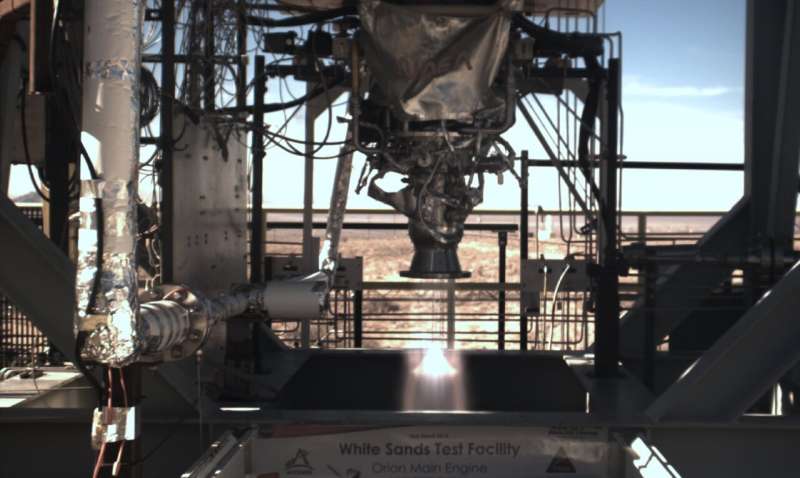The tests were performed on Test Stand 301A in White Sands' Propulsion 300 Area. The injector was mounted to a test engine that fired multiple times for three seconds each, for a total of 21 tests. With each test, the White Sands team sought to demonstrate the OME injector's ability to maintain consistent and controlled combustion and to return to normal operations if the combustion process was artificially perturbed.
Many White Sands team members were involved in this effort. James Hess, project manager and operations director, ensured the tests were completed safely and successfully by overseeing operations, and confirming test requirements were met. James Mahoney handled the test schedule and budget as project lead, while Jordan Aday directed operations and the actual tests.
Other key roles included lead electrical engineer Sal Muniz, and instrumentation engineer Jesus Lujan-Martino. Aerojet Rocketdyne's Shaun DeSouza served as test article director, working to ensure the injector operated as expected and that test condition requirements were met. Additional support was provided by OME Program team members at NASA's Johnson Space Center and Glenn Research Center.
The results confirmed that the OME injector could maintain stable combustion, and the team determined the tests were successful. A unique aspect of the OME injector is that it was fabricated through an additive manufacturing process called selective laser machining—basically 3D printing with metallic powders instead of plastics. Demonstrating the effectiveness of 3D printed components could help NASA and its partners lower costs and increase efficiencies in development processes.
The injector design will now be incorporated into a full OME that will be tested as a full engine assembly at White Sands once it is ready.
Provided by NASA



